Project 26 and 26 bis cruisers. Part of 7. "Maxim Gorky" against "Gatling Chuck" and heavy cruisers
Light cruiser "Molotov"
So, in the previous article, we looked at the chances of a possible confrontation between the Soviet light cruiser Maxim Gorky and its British counterpart Belfast. Today it was the turn of the "Brooklyn", "Mogami" and heavy cruisers. Let's start all the same with the American.
"Maxim Gorky" against "Brooklyn"
The American cruiser was a very unusual sight. "Brooklyn", of course, was an outstanding ship of its time, but at the same time rather strange: in an effort to bring other characteristics to record levels, the American shipbuilders in some cases admitted simply inexplicable constructional mistakes. But let's not get ahead.
Very little is known about the shooting controls of the Brooklyn. He had two KDP to control the fire of the main caliber, while each KDP possessed only one range finder, but whether the scartometer was unknown. The sources available to the author do not say anything about this, but from the description of the battles of this, alas, it is impossible to understand: the battles in which the British "towns" participated, are described in the literature in no detail. In the absence of accurate data, we will assume that the shooting control system of the main caliber of “Brooklyn” was not too inferior to that of “Maxim Gorky”, although there are big doubts about this. In any case, the three rangefinders of the KDP "Maxim Gorky" gave him a certain advantage against the possible presence of a scartometer at Brooklyn.
Light cruiser "Boys" (type "Brooklyn")
The main caliber of the Americans was already 15 * 152-mm guns in five three-gun towers, and the guns had an individual cradle and ... did not have separate vertical guidance mechanisms. How to explain this paradox, and why it was necessary at all to make the tower heavier with tools in different cradles, if they could only be induced all together, i.e. as if they were placed in the same cradle? Perhaps this was done in order to achieve a greater distance between the axes of the trunks, which in the towers of the main caliber "Brooklyn" reached 1,4 m. But still it was significantly less than the British towers (198 cm), and, moreover, this layout hints the fact that the Americans, like the British, planned to shoot and shoot fast with full salvos, i.e. use the same archaic method of zeroing on the observation of signs of falling. And one range finder in the KDP ... everything seemed to indicate the identity of the methods of controlling the fire of the American and English cruisers. If we knew that the Brooklyn, like the English cruisers, had fought with full salvos, then the conclusion would have left no doubt, but, alas, we do not know. This is all that we can say for sure: even if the Brooklyns PUS could provide sighting with a “ledge” and a “double ledge”, the lack of separate vertical guidance would give American sailors exactly the same difficulties that Soviet artillerymen had, and here the placement of guns in different cradles did not give Americans any advantage.
As for the shells, here the Americans differed from the British not to the best: if the British six-inch shot 50,8-kg with a projectile with an initial speed in 841 m / s, then the American - only 47,6-kg with an initial speed 812 m / s. At the same time, a semi-slaughter American projectile was equipped with only 1,1 kg of explosives versus 1,7 kg in the British. True, "Uncle Sam" won back on the high-explosive: these shells from the Americans carried as much as 6,2 kg of explosives against 3,6 kg of British.
Aware of the excessive lightness of their “arguments”, the United States created a “super-heavy” six-inch armor-piercing 59-kg projectile. Of course, his initial speed was lower than that of the light 47,6-kg and was only 762 m / s. But due to its greater gravity, the projectile was slower to lose energy, flew further (almost 24 km versus about 21,5 km for the lung) and had slightly better armor penetration. According to the last parameter, the Brooklyn guns were now superior to Belfast: if the English 50,8-kg projectile on 75 kbt had a speed in 335 m / s, then the American 59-kg on 79 kbt had 344 m / s with the incidence angles comparable.
However, you should pay for any dignity: in the USSR they also developed super-heavy projectiles (albeit for 305-mm artillery systems) and soon became convinced that the excess weight for their caliber deprives the projectile of strength. The Americans were confronted with the same (although the mass of their new projectile was almost 24% more than the old one, but in the "heavyweight" they managed to place only 0,9 kg of explosives, that is, even less than in the old 47,6 kg (1,1 kg) less than in British shells).
The rest of the American towers should be recognized as very perfect. Just like the English ones, they had not a fixed angle, but a range of loading angles (from –5 to + 20 degrees), while, apparently, the chargers equally efficiently and quickly charged guns in the entire range. As a result, the towers turned out to be very fast-firing: for the Savannah cruiser a record was fixed - 138 rounds per minute from all 15 guns, or a volley every 6,5 seconds! But here are the technical solutions, due to which such a rate of fire was obtained ...
On the one hand, the Americans perfectly defended the artillery of the main caliber. The front sheet of the turret is 165 mm, the sides of the side plates had 76 near the frontal sheet, and then they were thinned to 38 mm. 51 mm had a horizontal roof. Barbet defended as much 152 mm armor. But…
First: to reduce the size of the artillery cellars, the Americans placed the shells directly in the barbat, and it is extremely difficult to call this a successful solution. Second: the heavy barbet could not be reached by armored decks, as a result it ended without reaching one (and for the elevated towers - two) the interdeck spaces to the last. Only a narrow feed tube for charges (76 mm) was reserved between the barbet and the armored deck. As a result, exceptionally heavily-booked artillery installations were completely defenseless from a “skirt” strike, i.e. in the space between the end of the barbet and the armored decks - the projectile exploded under the barbet practically “touched” the shells stored there.
Brooklyn type light cruisers booking scheme
In general, booking cruisers like the Brooklyn leaves many questions. For example, the citadel is very high (4,22 m), recruited from strong armor plates. From top to bottom, the 2,84 mm was thicker than the 127 m, then it was thinned down to 82,5 mm, and the traverses had a uniform thickness of 127 mm. But Bronepoyas covered only the engine rooms, i.e. about 60 meters or less than a third of the length of the cruiser! From the citadel, a very narrow underwater armor belt (that is, it was completely under water) with a thickness of 51 mm went through the nose, which did not cover even one interdeck space. But in the stern of the hull nothing covered at all, but inside the hull there was an 120-mm armored partition protecting the artillery ground of the GK stern towers. All of the above "locked" traverses thickness 95,25 mm. On top of the citadel of the nasal armor belt and the stern armored dismantles were 51-mm armored decks.
In general, such protection can be described as “all or nothing” against 152-mm armor-piercing projectiles: the citadel's armor-belt protected them well, and getting into an unarmored board would result in projectiles simply flying away without tearing. But the shelling of the cruiser with six-inch high-explosive shells could lead to extensive flooding of the extremities, since the ship did not protect anything at the level of the waterline. In this case, the water would pour over the fore / stern armor, located below the waterline.
In general, in the duel situation at a distance of 75 kbt against the Maxim Gorky, the American cruiser looks somewhat better than the English. He will also have problems with zeroing (the flight time of an American projectile at such a distance is approximately 30 seconds) and, other things being equal, will seek coverings slower than the Soviet cruiser, and his 47,6-kg projectiles to Maxim Gorky are not terrible. But for super-heavy 59-kg shells there is still a small chance to penetrate the citadel of the domestic ship, but only if Maxim Gorky is located strictly perpendicular to the Brooklyn line of fire, and this happens infrequently in naval combat. In addition, the Soviet cruiser, having an advantage in speed, could always overtake an American a little, or fight on convergent / divergent courses and there was no chance to penetrate the armor of the Brooklyn cannons. And in the case of armor penetration, there were few chances of causing serious damage with a charge of 0,9 kg of explosives.
Therefore, the most reasonable tactic "for" Brooklyn "- is the management of high-explosive shells. The practical rate of fire of the American cruiser really struck the imagination, reaching 9-10 shots / min. On the barrel, which allowed (in a runaway mode) even with the roll, to do a volley every 10-12 seconds. Accordingly, it made sense for the Americans to go after firearms with landfills in the hope of “bombarding” the Soviet ship with shells that had as many 6 kg of explosives.
The problem was that the Maxim Gorky was very well protected from the high-explosive shells, but the Brooklyn, whose citadel was more than twice as short as the Soviet cruiser, was frankly bad. "Maxim Gorky" did not have a deep sense to fight with armor-piercing shells: the vertical armor of the American cruiser was too small, despite the fact that, falling into an unarmored side and superstructures, the Soviet armor-piercing and semi-armor shells would fly away without breaking. But high-explosive 180-mm shells with their 7,86 kg of explosives could mess things up in the unarmored Brooklyn case. Of course, the American guns were faster, but this was to a certain extent offset by an increased spread of their 152-mm projectiles.
On large distances than the 75-80 KBT, the Soviet cruiser also had an advantage: using low-combat charges, the Maxim Gorky could pierce the Brooklyn armored hull at distances from which even the “superheavy” 152-mm shells of the domestic ship’s citadel not yet threatened. In principle, the 59-kg projectile had a chance to penetrate the Soviet cruiser’s 50-mm deck at extreme distances, but getting from that distance to Maxim Gorky (given the very large dispersion) was very difficult, and why should Gorky fight in unprofitable position for him? The advantage in speed, and hence the choice of the distance of the battle, belonged to the Soviet ship.
But at short distances (3-4 miles) "Brooklyn" due to its enchanting rate of fire and the ability to pierce the citadel "Maxim Gorky" would already have an advantage over the cruiser project 26-bis. But to some extent it was compensated by a very strange American decision - the abandonment of torpedo tubes. Of course, a pair of three-pipe 533-mm TA, which were on Soviet and British cruisers, could not withstand any comparison with the torpedo weapons Japanese cruisers: neither by the number of torpedoes in the side salvo, nor by their range or power. However, in a short-circuit battle, a three-torpedo salvo (especially at night) could be a decisive argument in the dispute between steel giants, while the American cruiser could only rely on guns.
From the foregoing, the conclusion follows: although the Brooklyn against the Soviet cruiser looks somewhat better than the English Belfast, the advantage at medium and large distances still remains for Maxim Gorky. At short distances, the advantage in artillery at the "Brooklyn", but the lack of his torpedo armament greatly reduces the chances of the American cruiser "short circuit". Thus, the Soviet ship is still more dangerous than its American counterpart, and this is despite the fact that the standard displacement of the Brooklyn on 1600-1800 tons (in various series cruisers) is greater than that of Maxim Gorky.
“Maxim Gorky” against “Mogami”
Mogami type cruiser
If someone believes that the Soviet 180-mm cannon B-1-P with its pressure in the barrel of the 3 200 kg / sq. cm was reformed, then what could be said about the 155-mm Japanese artillery system, which had 3 400 kg / sq. cm? Even the Germans did not allow themselves this, and this is despite the fact that German industry, unlike the Japanese, did not experience a shortage of high-quality raw materials. However, it should be borne in mind that, like the main caliber of the Soviet cruisers, the Japanese 155-mm guns had a “common” 33,8 kg charge (similar to our hard combat, which created pressure in the 3 400 barrel kg / sq. Cm), and a reduced charge at which the initial velocity of the projectile was lower, and the survivability of the barrel was higher.
The “reinforced combat” charge dispersed the 55,87-kg projectile to the initial speed of 920 m / s, which gave the Mogami the best armor penetration among similar artillery systems from other countries. At the same time, the accuracy of the firing of the Japanese guns was quite at the level of their own 200-mm artillery systems, even at firing distances close to the limit. For such high performance, we had to pay both a barrel resource (250-300 shots) and a practical rate of fire that did not exceed 5 shots / min, and this, apparently, was achieved only when shooting with a vertical elevation not exceeding a fixed angle loading in 7 deg.
Regarding the fire control system, alas, nothing definite can be said either: the sources available to the author of this article do not describe it with the necessary accuracy (one range finder, but everything else ...). But the booking of Mogami type cruisers was studied quite thoroughly.
The boiler rooms and machine rooms were protected by oblique (at an angle of 20 degrees) armored belt of length 78,15 m, height 2,55 mm and thickness 100 mm (along the upper edge), thinned down to 65 mm. From the lower edge of the armored belt and further down to the very dual day, there was an anti-torpedo armored disassembly, with a thickness from 65 mm (top) to 25 mm (bottom). Thus, the cumulative height of armor protection was as much as the 6,5 meter! But the citadel did not end there: the nose (32,4 m, and the Kumano and Suzuya - on 36,32 m) and the stern (21,46 m) went less high (20 m) and only slightly protruding above the surface of the water, the armor belt, which had on the upper edge 4,5 mm with a decrease from the bottom to 140 mm. Thus, the total length of the citadel of Japanese cruisers reached 30 — 132,01 meter! Traverse thickness reached 135,93 mm.
As for the armor hulls, it had 35 mm thickness above the boiler rooms and machine rooms, but it did not rely on the armor belt. Instead, from its edges to the upper edge of the armored belt were 60 mm bevels (angle 20 hail). Further to the bow and stern of such innovations was not observed: 40-mm armored deck was lying on the upper edge of the 140-mm armored belt.
In contrast to the very well thought-out and powerful protection of the corps, the booking of towers and barbets looked completely “cardboard”, having only 25,4 mm of armor. However, in fairness, you need to specify that from the armor deck and up to about the height of 2,5 m (for towers No. 3 and 4) their central pins were protected 75-100 mm by armor (for the remaining towers the corresponding figures were 1,5 m and 75 mm).
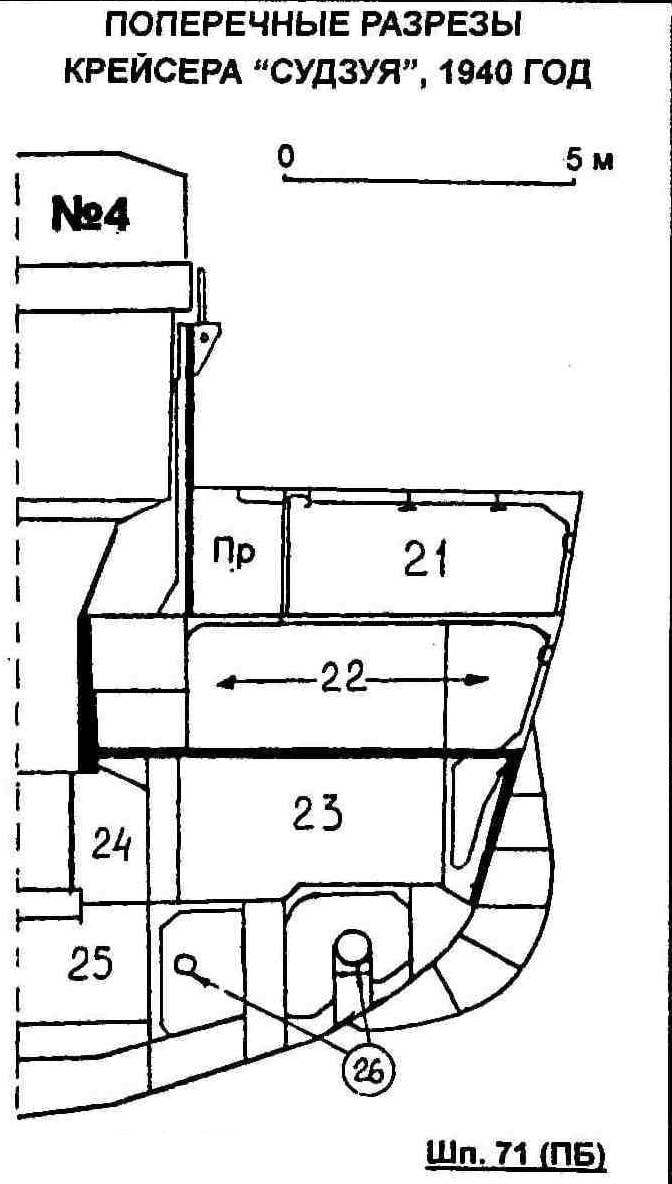
At a distance of a decisive battle "Mogami" for the "Maxim Gorky" was the most dangerous of all the cruisers described earlier. The Soviet cruiser does not have a particular advantage in the speed of adjustment. The author of this article does not have exact data on the flight time of Japanese 155-mm shells on 75 kbt, but it is known that their initial speed is equal to the initial speed of Soviet 180-mm projectiles. And although the heavier domestic "hotels" will lose speed slower than the Japanese, yet the difference in flight time will not be as significant as in the case of the British and American cruisers. Accordingly, some advantage to the Soviet ship could only give superiority in quality PUS, but we can not say how great it is.
At a distance of 75 KBT, 70-mm vertical armor of domestic cruisers is vulnerable to 155-mm Japanese shells, but the opposite is true: even 140-mm armor, even with 20 incline, will not withstand 97,5-kg of B-1-P armor-piercing projectile. The same applies to the armored forces over the Mogami machine and boiler rooms (60 mm), which also will not be an obstacle for Soviet shells. But in general, we have to admit that the protection of both cruisers is not enough to counter enemy artillery, and therefore the one who can provide more hits to the enemy will win. And here Mogami still has more chances: its 155-mm guns are at least as good as Soviet 180-mm guns, the accuracy of the Japanese is quite good, but the number of guns is 1,67 more. Of course, the content of explosives in the Japanese projectile (1,152 kg) is almost twice lower than that of the Soviet, which gives Maxim Gorky certain advantages, but it must be borne in mind that the Mogami are much larger. The standard displacement of Mogami-type cruisers was 12 400 t. And the superiority in size provided the Japanese ship with greater resistance to damage than the Maxim Gorky had. That is why “Mogami” in a battle at a distance of 75 KB would still have a certain superiority.
We must make a reservation here: in all cases, the author of this article considers the performance characteristics of the ships immediately after they were built, but in the case of the Mogami, an exception should be made, since in their original version the cruisers were not very seaworthy (they managed to get damage to the hulls in calm water, simply developing full speed), and only immediate upgrades made them full-fledged warships. And after this modernization, the standard displacement of the same “Mikuma” just reached 12 400 tons.
So, at the main distances of the battle, the Mogami surpassed the Maxim Gorky, but at long distances (90 KB and further) the Soviet cruiser would have the advantage: here the deck booking Mogami could not resist 180-mm shells at that time how the Maxim Gorky would remain invulnerable for the guns of the Japanese cruiser — neither the board nor the deck of the 26-bis cruiser at such distances would take 155-mm projectiles. But it should be noted that, unlike “Brooklyn” and “Belfast”, in a clash against “Mogami”, “Maxim Gorky” did not have superiority in speed and could not choose the appropriate distance of the battle, but could keep it established, because the speeds of both cruisers were roughly equal.
Well, at short distances, the superiority of the Mogami became overwhelming, because four three-tube 610-mm torpedo tubes were added to the artillery superiority, which was twice as great as the Soviet ship in terms of quality and torpedoes equal to Japanese long lanes ", Then there was no one in the world.
Thus, in assessing the possible opposition of the Mogami in his 155-mm incarnation and Maxim Gorky, a certain superiority of the Japanese cruiser should be diagnosed. But the fact that the Soviet ship, being one and a half times smaller, nevertheless does not look like a “whipping boy” at all, and even exceeds its rival at long distances, says a lot.
In general, from a comparison of the Maxim Gorky with the light cruisers of the leading maritime powers, we can state the following. It was the decision to equip the Soviet ships 180-mm artillery provided them with an advantage over the "six-inch" cruisers, which the latter could not compensate for either large size or better protection. The only ship carrying 155-mm artillery and received (not overwhelming) superiority over the Soviet cruiser (Mogami) turned out to be one and a half times larger than the Maxim Gorky.
We now turn to the heavy cruisers, and begin with the same "Mogami", who replaced his 15 * 155-mm guns with 10 * 203,2-mm. This immediately made the Soviet cruiser significantly weaker at long distances. The Japanese can conduct a five-gun semi-salvo shooting, each of which shoots only one gun in the turret, i.e. the influence of the gases of neighboring guns is not at all. The Soviet cruiser with its guns in the same cradle with alternate firing four and five-gun salvo will still have such an effect, therefore at greater distances we should expect some worse accuracy than the Japanese. At the same time, the Japanese eight-inch is more powerful: its 125,85-kg projectile carried 3,11 kg of explosives, which is one and a half times more than the domestic 180-mm “armor-piercer”. Also, the Japanese cruiser remains stronger than the Soviet at medium and short distances: if before its superiority was provided with the ability to "get" the enemy with more hits, now with more projectile power. With the 203-mm guns, the Mogami demonstrates a clear advantage over the Maxim Gorky, but he himself is by no means invulnerable: at any combat distance for the Soviet cruiser 180-mm shells are permeable either to the sides or to the deck of the Japanese, The “cardboard” Mogami towers are extremely vulnerable at all combat distances. In other words, the superiority of the “eight-inch” “Mogami” in comparison with the same “six-inch” has grown, the “Maxim Gorky” is definitely weaker, and yet it still has some chances of winning.
“Maxim Gorky” against “Admiral Hipper”
Heavy cruiser "Prince Eugen"
“Admiral Hipper” type cruisers are not considered good ships. V. Kofman put it very well about them in his monograph Princes Kriegsmarine: Heavy Cruisers of the Third Reich:
Part of the reason for this is the very archaic reservation scheme, almost unchanged (not counting such changes in armor thickness), borrowed from light German cruisers. The Admiral Hipper's armored belt was very long, he defended the freeboard almost the entire length, covering the boiler rooms, machine rooms and artillery grabs and a little more than that, speaking for the barbets of the bow and stern towers. But this naturally affected its thickness - 80 mm at an angle of 12,5 degrees. At the tip of the belt, the citadel was closed with 80 mm by traverses. But even after the traverses, the armored belt continued: to the stern with a thickness of 70 mm, and to the bow - 40 mm, three meters from the stem - 30 mm.
There was also two armored decks, the top one and the main one. Upper stretched over the citadel (in the stern even a little further) and had a thickness of 25 mm above the boiler rooms and 12-20 mm in other places. It was assumed that it would play the role of an activator of the fuse for the shells, which is why they may detonate in the interdeck space before reaching the main armored deck. The latter throughout the citadel had a thickness of 30 mm, only in the areas of the towers thickening to 40 mm. Of course, the main armored decks were equipped with bevels, traditional for German ships, which had the same 30 mm thickness and were adjacent to the lower edge of the armor belt. The horizontal part of the main armored deck was located about a meter below the upper edge of the armored belt.
The main caliber towers of the Admiral Hipper cruiser carried rather heavy armor: 160 mm forehead, from which strongly oblique 105 mm armor plate went up, the remaining walls had 70-80 mm armor. Barbets all the way up to the main armored decks had an equal thickness of 80 mm. The cabin had a 150 mm wall and a 50 mm roof, in addition there were other local reservations: rangefinder posts, KDP and a number of important premises had 20-mm protection, etc.
The fire control system of the German heavy cruiser was probably the best in the world (before the appearance of artillery radars). Suffice it to say that Admiral Hipper had three KDP. In addition, the OMS came out truly "unkillable", since the Germans managed to reach double and even fourfold redundancy of certain types of equipment! All this absorbed a lot of weight, making the ship heavier, but the quality of the launcher was affected in the most positive way. Eight German 203-mm cannons were a masterpiece of artillery - by ensuring the highest initial velocity, the shells flew softly, thus achieving a gain in accuracy.
What can you say about the duel situation "Maxim Gorky" against "Admiral Hipper"? Of course, the Soviet cruiser does not have a free maneuvering zone: at any range, the eight-inch projectiles of his opponent are capable of piercing either the 70 mm board or the beam of the citadel, or the 50 mm armor. Germanic guns are more accurate (when firing half-cavities, German shells are not affected by powder gases from neighboring guns, because only one gun of each tower participates in the half-salop), the rate of fire is comparable, and the German CCP is more perfect. Under these conditions, the superiority of the Soviet cruiser in the number of guns per barrel absolutely does not solve anything.
And yet, the one-on-one fight of Admiral Hipper and Maxim Gorky will not be a game with only one goal. At a distance of a decisive battle (75 KBT), an armored piercing shell of a Soviet cruiser is able to penetrate both 80-mm armor and 30-mm bevel behind it, and this possibility is maintained in a fairly large range of angles of meeting with armor. German barbets of the main-caliber towers also do not provide protection against Soviet 180-mm projectiles. And at long distances when firing low-combat charges, the armored corps of the German cruiser, having a total thickness of 42-55 mm, become vulnerable. In addition, between the upper deck (where the first armored deck is located) and the main armored deck there is more than one and a half interdeck spaces of the unarmored side - if the Soviet projectile gets there, then only 30 mm of the main armored deck will remain on its way.
At the same time, the speed of the German cruiser, even in tests when forcing boilers, was no more than an 32,5 node, and in daily operation it barely reached the 30 nodes. "Maxim Gorky" was certainly faster and had good chances to "retreat to the previously prepared positions." Of course, the German heavy cruiser could not choose the distance of the battle.
At the same time, an interesting nuance should be taken into account: the German semi-armor shells were closer in quality to high-explosive than armor-piercing, for example, the maximum thickness of armor that the semi-armor projectile was able to penetrate into 50 kbt did not exceed 100 mm. As a result, to conduct a battle on 75 kbt with similar missiles with a cruiser that had 70 mm vertical armor did not make much sense: armor penetration, perhaps, is possible, but every other time. Therefore, the protection of the Soviet ship for all its insufficiency still demanded the use of armor-piercing shells from the German gunners, and those in terms of explosives (2,3 kg) were not too different from the Soviet 180-mm (1,97 kg).
Of course, the German cruiser excelled in battle "Maxim Gorky" at any distance. Of course, his artillery was more powerful, and the defense - more thoroughly. But it is surprising that Admiral Hipper did not have a decisive superiority over the cruiser of the 26-bis project on any of these parameters individually or on their totality. The only thing in which the German heavy cruiser exceeded the Soviet light one was in combat stability, but again, as in the case of the Mogami, this was due to the large size of the German cruiser. Admiral Hipper had a standard displacement of 14 550 tons, i.e. more "Maxim Gorky" almost 1,79 times!
Comparison with the Italian "Zara" or the American "Wichita", in general, will not add anything to the earlier conclusions. Just like the Mogami and the Admiral Hipper, they could hit the Soviet cruiser at any distance of combat due to the powerful 203-mm artillery and generally had superiority over them, but their defense was also vulnerable to the 180-mm Soviet guns, why the battle with Maxim Gorky would be very insecure for them. All of these cruisers at the expense of their size had greater stability in battle (the larger the ship, the harder it was to sink it), but at the same time they were inferior to the Soviet cruiser in speed. None of the above heavy cruisers had an overwhelming superiority over the domestic ship, and all of them were significantly larger than the Maxim Gorky. The same “Zara”, for example, exceeded 26-bis by a standard displacement of more than 1,45 times, which means it was significantly more expensive.
Thus, in its fighting qualities, the Maxim Gorky occupied an intermediate position between light and heavy cruisers - surpassing any light cruiser of the world, it was inferior to heavy ones, but to a much lesser extent than its six-inch counterparts. From the overwhelming majority of heavy cruisers, the Soviet ship could have escaped, but fighting with them was by no means a death sentence for him.
A small remark: some dear readers of this series of articles wrote in the comments that such a comparison of head-on-cruisers in a duel situation is somewhat divorced from reality. With this you can (and should) agree. Such comparisons are speculative: it would be much more correct to determine the compliance of each particular cruiser with the tasks that were set before it. Is Belfast inferior to Maxim Gorky? So what with that! It was created to counter the "six-inch" cruisers like the "Mogami", and for these purposes the combination of its protection and firepower, perhaps, optimally. "Brooklyn" weaker cruiser project 26-bis in a duel? So the American light cruisers were faced with short battles of night with Japanese cruisers and destroyers, for which the "Gatling barrel" was very well suited.
But the task of the Soviet shipbuilders was to create a ship-killer light cruisers in a light cruiser displacement and at the speed of a light cruiser. And they coped with their task “perfectly”, creating well-protected, fast-moving and reliable ships. But still the key parameter that provided our cruisers with the fighting qualities they needed was the use of 180 mm caliber artillery.
On this cycle of articles devoted to the cruisers of projects 26 and 26-bis, could be finished. But one should still compare the Maxim Gorky anti-aircraft armament with foreign cruisers and answer the burning question: if the 180-mm guns turned out to be so good, why were they abandoned on subsequent series of Soviet cruisers?
And that's why…
... ending should!
- Andrei from Chelyabinsk
- Project 26 and 26 bis cruisers. Part of 6: "Maxim Gorky" against "Belfast"
Project 26 and 26 bis cruisers. Part of 5: Armor and Machines
Project 26 and 26 bis cruisers. Part of 4. And a little more about artillery
Project 26 and 26 bis cruisers. Part of 3. Main caliber
Project 26 and 26 bis cruisers. Part of 2. “Italian footprint” and classification features
The cruisers of the project 26 and 26-bis. Part of 1. Genesis
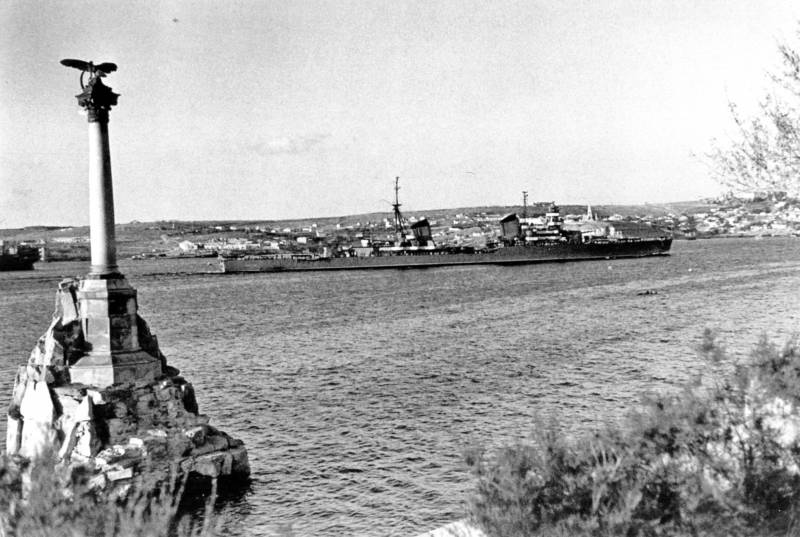
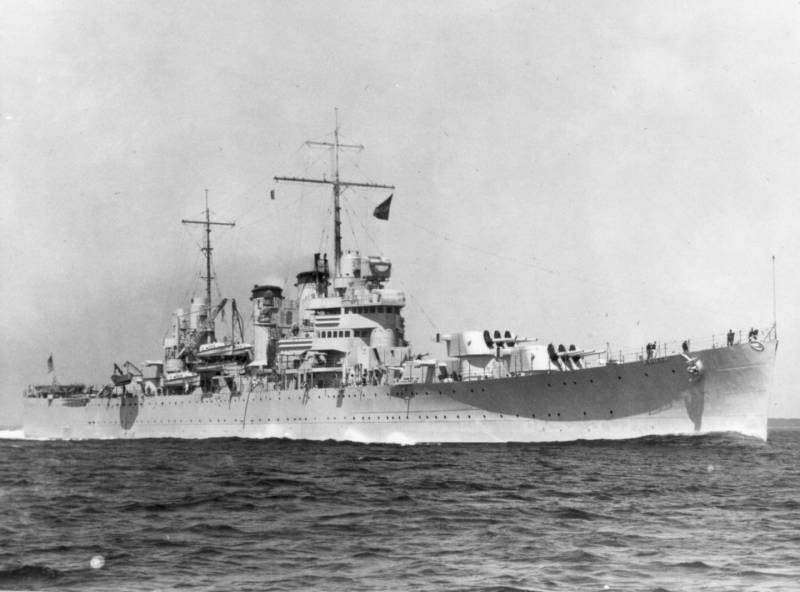

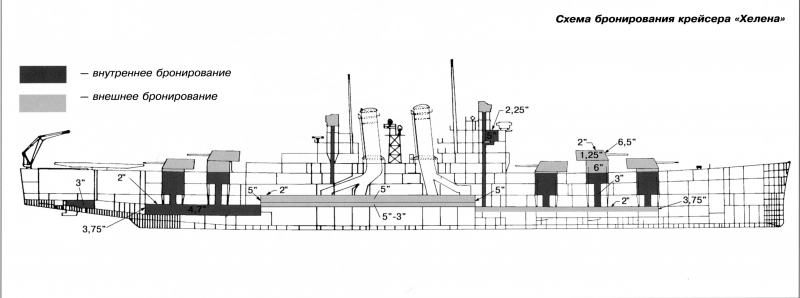
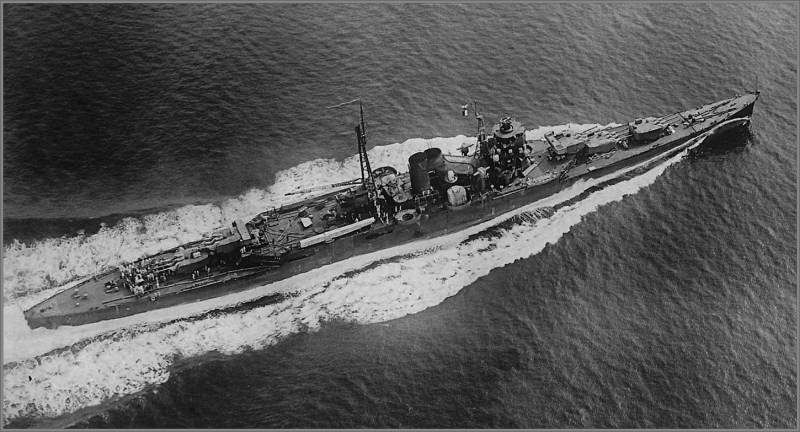
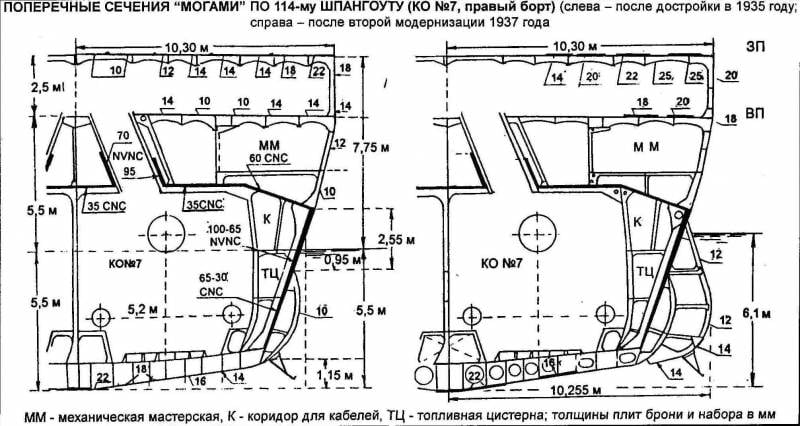

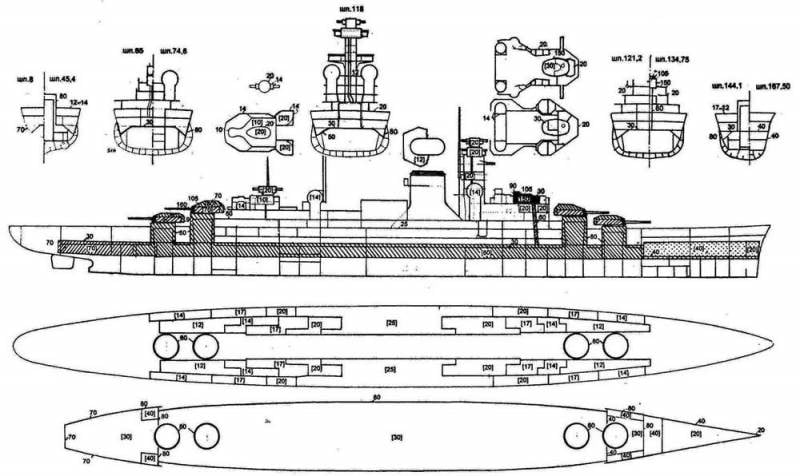
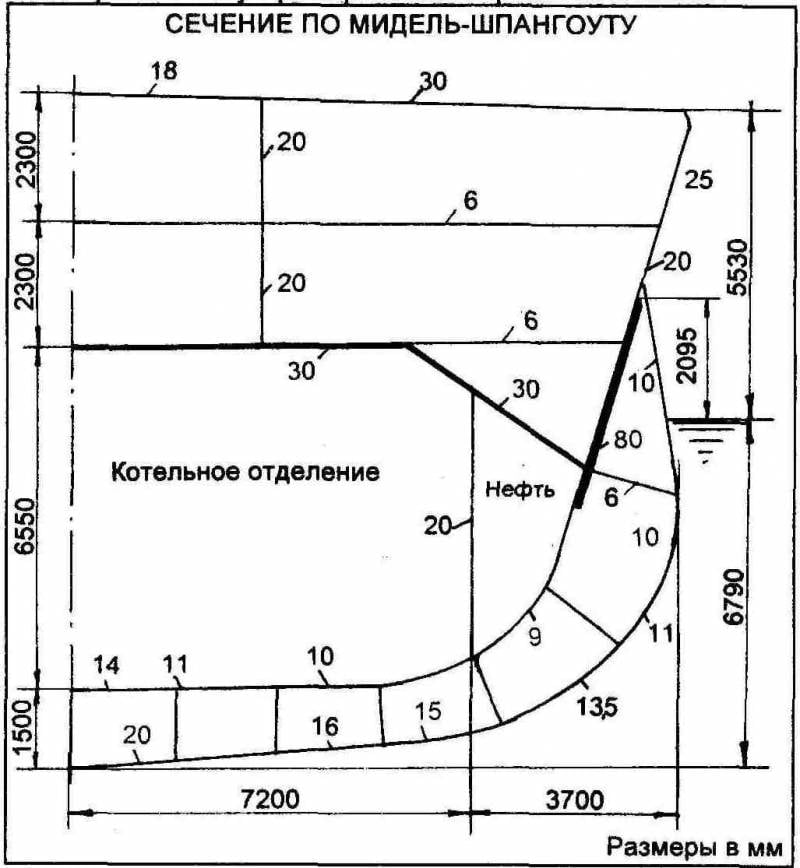
Information